Black orchid: description, types and cultivation

The black orchid is one of the most mysterious and unusual representatives of the world of exotic plants. Fierce debates are still going on about the origin and even the very existence of this flower. Some people believe that the black orchid does not exist at all in nature. What is actually known about this amazing flower?
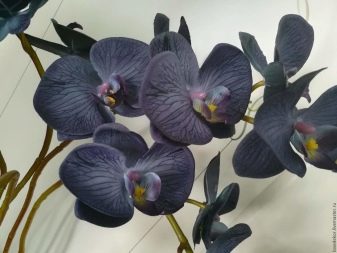

Does a flower exist in nature?
According to biologists, in nature, black does not exist at all in the form in which it is familiar to man. The shade, as close as possible to black, is provided by special pigments, which can be violet, dark purple, blue. Therefore, the allegedly black phalaenopsis is in fact usually maroon, dark purple and even dark blue. Visually, such a plant looks black, but the difference can only be noticed upon closer examination of its petals. Since initially the difference from black in such shades is not very noticeable, the black orchid got this name.
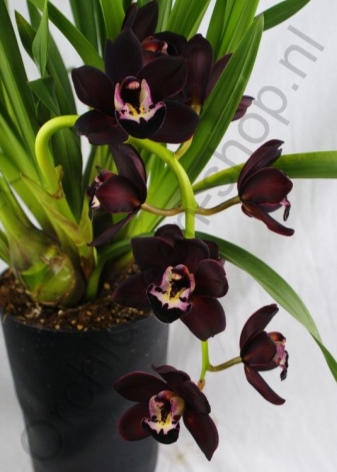

Varieties
Currently, breeders have managed to breed many varieties of black phalaenopsis. It is noteworthy that orchids of such an unusual color in the wild prefer the same living conditions as their normal-colored counterparts. The best for them is a humid and warm tropical climate, which provides massive flowering of plants and their active development.
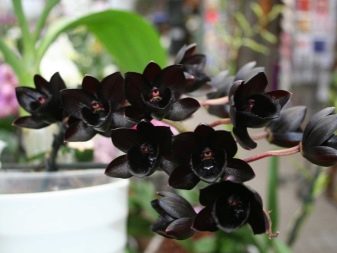

The most popular varieties of black phalaenopsis are:
- "Black Prince";
- "Black Bird";
- "Black Swan";
- "Black Pearl";
- "Black Mamba".
Let's characterize the varieties in more detail.
- "Black Prince" - Phalaenopsis, considered the blackest of all. In fact, the unusual color of this flower is a deep purple, almost inky hue. The characteristic feature of this phalaenopsis variety is the intricate white markings located in the center of the flower. Plant height can vary from 45 to 50 centimeters. The flower diameter can reach 7 centimeters. The number of flowers on a peduncle of this phalaenopsis can be different, depending on the characteristics and conditions of detention.
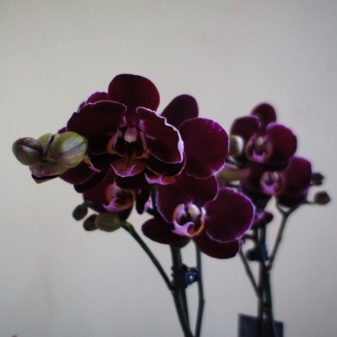
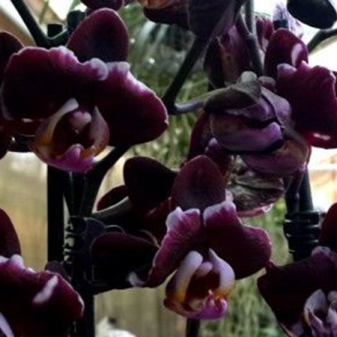
- "Black Bird" - a variety of orchids, distinguished by a very effective and long flowering. The true color of the flowers is deep blueberry. The flowers are large, with an attractive waxy gloss, located on one peduncle.



- "Black Swan" - a very graceful phalaenopsis with flowers of an original shape. The narrow and elongated petals of this orchid are colored deep purple, have a yellow core with a lilac tongue. A characteristic feature of this plant is its unpretentiousness to growing conditions.
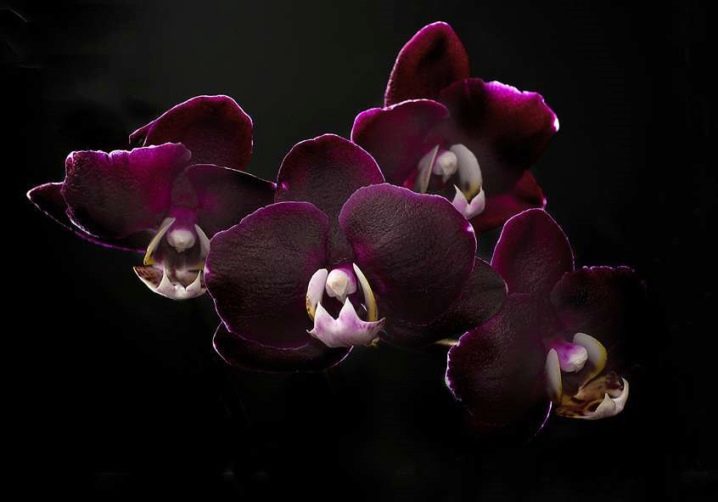
- "Black Pearl" - a hybrid orchid obtained as a result of many years of work of breeders. During the flowering period, the plant forms up to 4 peduncles, on which flowers of an unusual shape bloom. The color of the flowers of this phalaenopsis is purple-burgundy, which, in combination with the emerald shade of the leaves, makes the plant very effective.

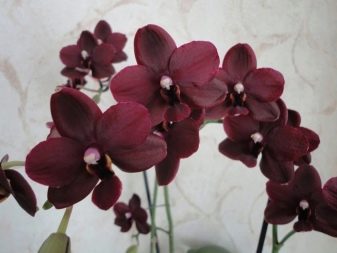
- "Black Mamba" - Phalaenopsis of extraordinary beauty with deep blueberry flowers and a white heart. During the flowering period, this orchid forms one peduncle, on which about 10 buds can form.
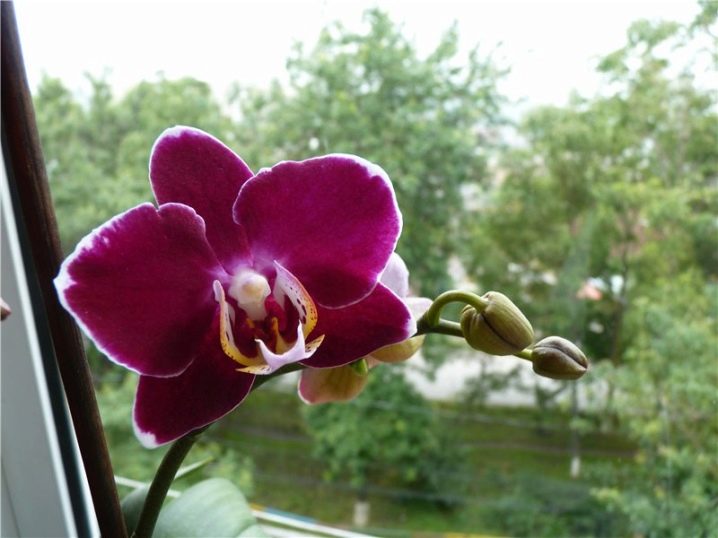
- Black phalaenopsis are not only inked and blueberry colored. So, for example, orchid flowers of the variety "Black Trevor" They are distinguished by a rich purple-burgundy hue, effectively standing out against the background of dark green leaves.
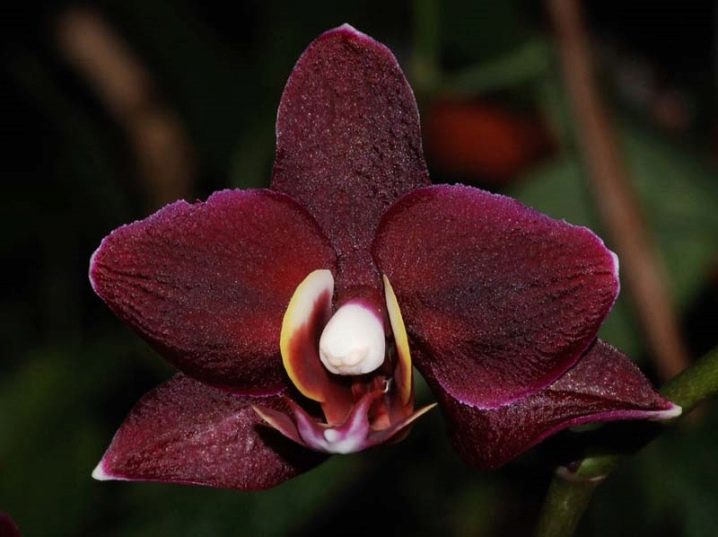
Transfer
When transplanting phalaenopsis of this variety, it is important to take into account that their roots are photosynthetic, that is, they require sunlight. With this feature in mind, black orchids must be grown in a pot with transparent walls. The best options are glassware or practical plastic containers.
It is important to ensure that there is a hole in the bottom of the container to drain excess water.
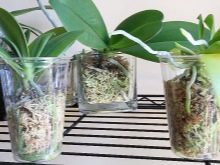
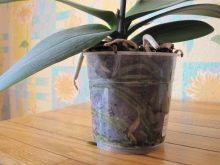
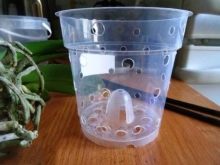
For a transplant, you need to use a special mixture, consisting of components such as:
- sphagnum moss;
- vermiculite;
- bark (preferably pine).
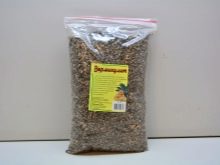
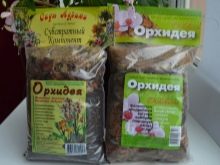
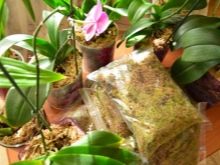
If vermiculite and sphagnum cannot be purchased during transplantation, it is allowed to plant the plant in a container only with crushed bark. It will provide the roots with normal air exchange and access to sunlight.
Orchids take root very well in containers with a mixture of crushed bark, clean coarse sand, sphagnum, peat and vermiculite. This mixture provides a complete nutrient medium for plant roots to thrive, bloom and grow.
During the preparation of the mixture, the components should be thoroughly moistened and only then placed in pots or containers.

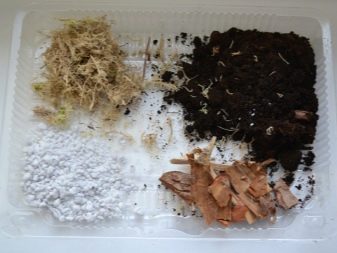
It is important to handle the roots of the plants very carefully during transplanting. Being very fragile and vulnerable, they can be easily damaged by careless and careless actions. If it is not possible to avoid damage to the roots during transplantation, all affected areas must be treated with ground activated carbon. This will protect the roots of the plant from the development of serious diseases.
The transplant should be carried out after the plant has faded and gains strength a little. Flowering phalaenopsis are not transplanted, since any stressful situation for them can result in dropping of buds. After transplanting, the pots with plants are placed in a shaded place for several days so that the orchids can quickly get used to and get used to the new conditions.
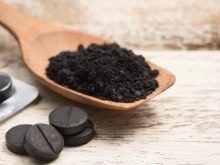
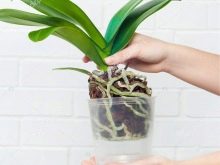
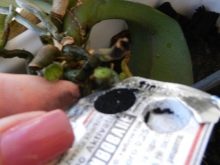
Orchid seeds are also planted in transparent pots with a pre-prepared mixture of bark, sphagnum and vermiculite. However, this method of plant breeding is considered the most laborious and is used mainly by experienced flower growers and breeders.
Black phalaenopsis are propagated not only by seeds, but also by cuttings and lateral shoots ("children"). A technique that involves dividing an adult bush is very popular among flower growers.
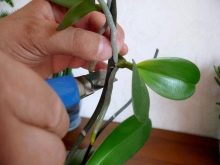
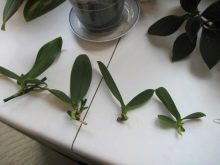
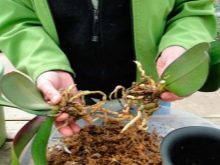
Optimal conditions of detention
Exotic black phalaenopsis need conditions as close as possible to their natural habitat. For normal development and abundant flowering, they need moisture, sun and warmth, that is, conditions similar to a tropical environment.
When growing orchids, it is very important to provide them with the required temperature regime. The most suitable temperature range is considered to be in the range of 18-22 °. Maintaining the temperature at the specified level will stimulate abundant and prolonged flowering of plants. If the air temperature in the room where the orchids grow is unstable, then the phalaenopsis simply will not bloom.
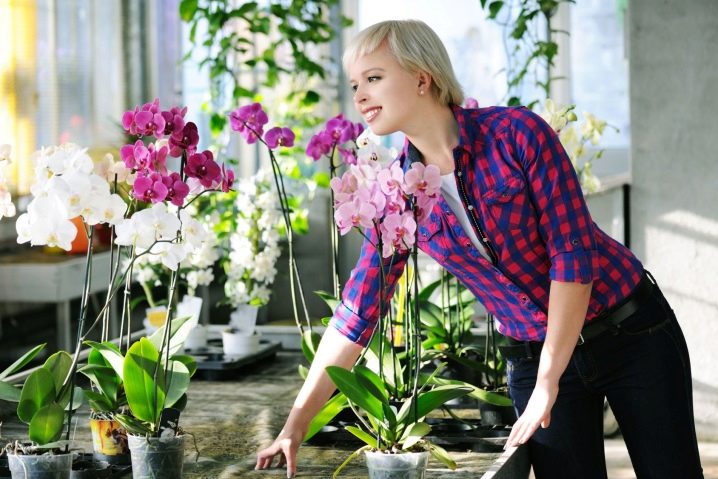
No less important for phalaenopsis and moisture, which should be present both in the substrate and in the air. These tropical flowers do not tolerate a moisture deficit, in which they begin to form buds less often and in fewer quantities. However, excess moisture can be no less harmful for these exotics. An excessively waterlogged substrate can lead to rotting of the roots and, as a result, the death of plants.
The optimal level of air humidity when growing orchids is considered by flower growers to be an interval of 30-40%. If the air in the room is dry, the leaves of plants will begin to wrinkle, losing their juiciness and natural turgor.To prevent this from happening, phalaenopsis should be regularly sprayed with a spray bottle. A wide bowl of water located near the pots will also provide the plants with moisture.
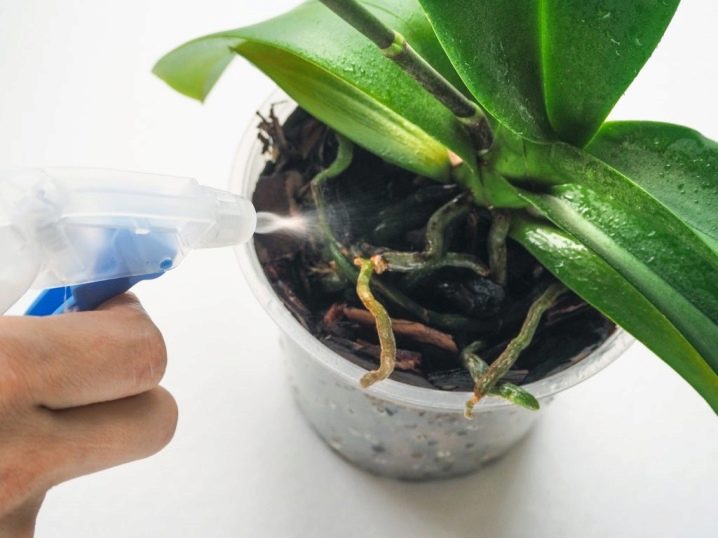
It is also important to provide good ventilation in the room where exotic plants grow. Oxygen deficiency negatively affects both their condition and the duration of flowering. Regular ventilation will help to ensure the flow of fresh air to the plants, during which the orchids should be removed from the windowsill, preventing them from being in a draft.
Black orchids are very demanding for sunlight. Insufficient light is one of the common reasons why these exotic plants do not bloom. If the daylight hours is less than 12 hours, then the plants simply do not have enough time and energy to form buds and ripen them. To compensate for the lack of light, it is recommended to supplement orchids with a fluorescent lamp.
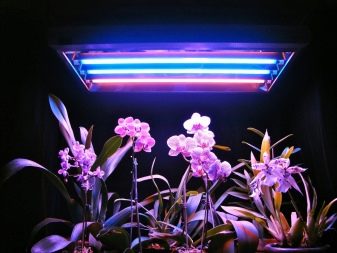
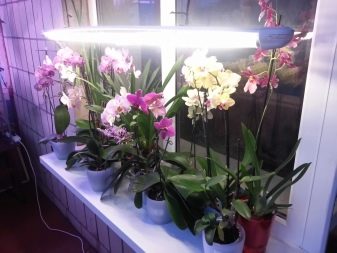
However, in an effort to provide maximum illumination to orchids, it should not be forgotten that direct sunlight can negatively affect the state of delicate flowers and leaves.
It is preferable to provide the plants with light diffused light by hanging a newspaper or special translucent film on the window glass.
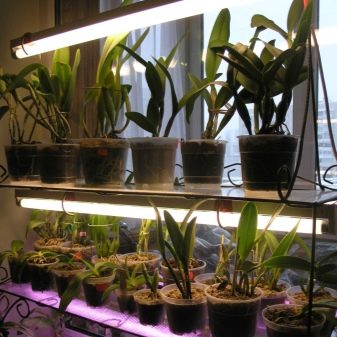

Care
The creation of optimal living conditions is not the only requirement to be guided by when growing black phalaenopsis. Watering and feeding are also very important aspects, the regime of which must be carefully observed and controlled.
Watering
As a tropical plant, orchids prefer moist but not wet soil. Drying out of the substrate in the pot should not be allowed, as this will lead to withering of the phalaenopsis and the fall of its flowers.
Watering is desirable with soft water at room temperature. Florists usually use rainwater or settled water. A regular drinking filter will help soften hard water. Watering plants with cold water or using water directly from the tap is strictly not allowed.
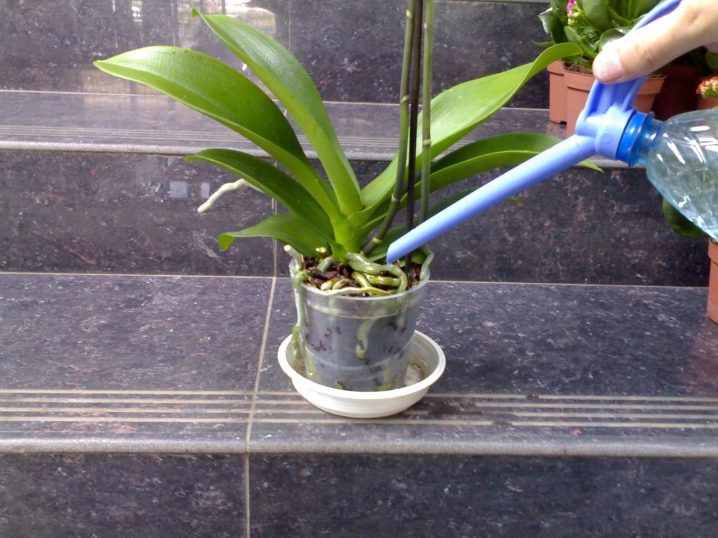
The fact that a black orchid needs watering can be determined by the condition of its roots. With a moisture deficit, the roots of the plant acquire a gray-green color.
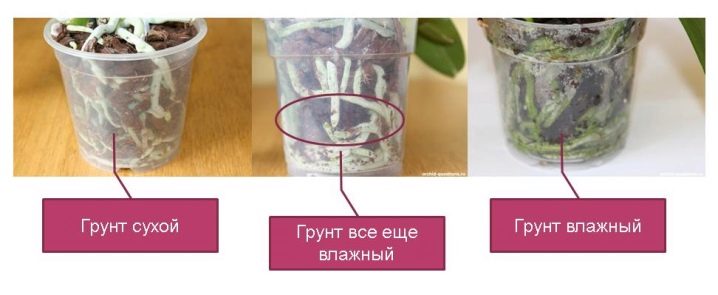
Plants are watered by sprinkling using a spray bottle or a special spray nozzle. Some gardeners use a regular shower for irrigation, moistening the substrate with it. Another watering method involves placing the plant pots in a bowl of warm water. Through the holes in the pots, moisture will penetrate into the substrate and moisturize the roots.
The watering regime should be regular, however, it is important for the grower to avoid waterlogging the substrate. The fact that the plant is over-watered is evidenced by the following signs:
- yellowing of the leaves;
- wilting of the bush;
- decay and blackening of the roots.
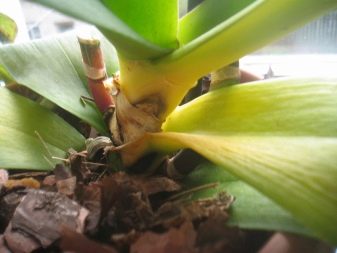
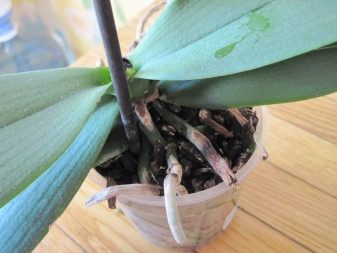
In summer, plants are watered 2-3 times a week, in winter - 1-2 times a week. In hot weather, watering is allowed more often.
At the moment when the orchid enters the resting phase after flowering, watering should be reduced. At this time, it is important to create conditions for the plant that save and support its strength.
Top dressing
Black phalaenopsis must be fed with special fertilizers designed specifically for this type of plant. Exotic animals should be fed during the period of their intensive development and growth. The recommended frequency of feeding is once every 2-3 weeks.
In the cold season, as well as in the resting phase, feeding should be reduced to 1 time per month. You can resume the usual feeding regime in the spring, when the plants begin to wake up from hibernation.
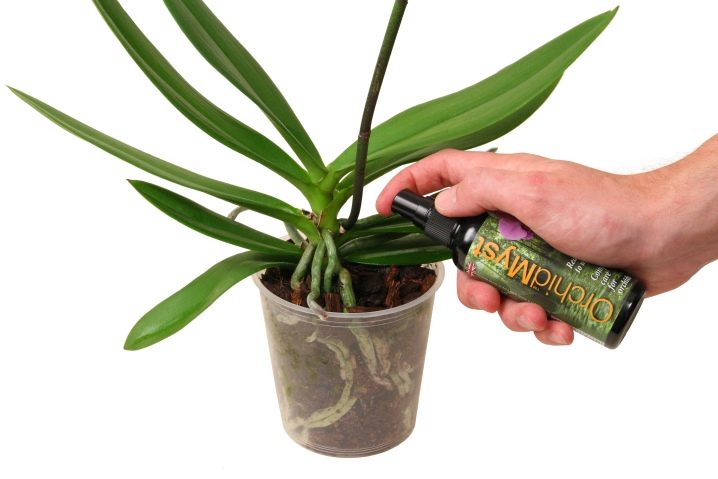
Diseases and pests
Black phalaenopsis are very vulnerable to pests and a large number of diseases. Most often, these exotic flowers suffer from various rot (fusarium, gray, root), the characteristic features of which are:
- discoloration of leaves (yellowing, browning);
- the appearance of plaque on the leaves;
- wilting of the bush.
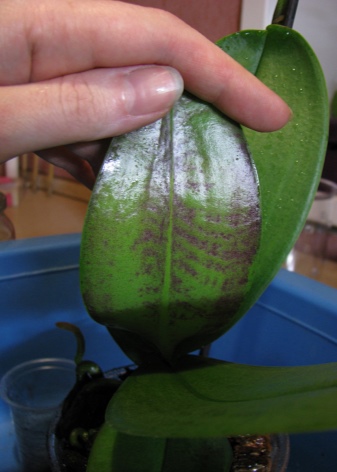
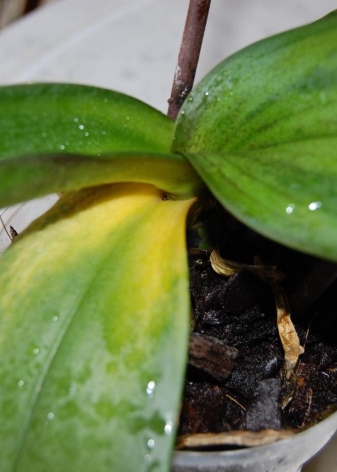
It is possible to cure plants from rot with the help of fungicidal preparations - "Fundazola" or "Topsin". The affected parts should be removed, and not only the roots, but also the substrate should be treated with a fungicide.
The appearance of a white bloom on flowers and leaves indicates that the phalaenopsis is affected by powdery mildew. If you do not start treatment in a timely manner, the plant will inevitably die. Treatment involves the use of colloidal sulfur, as well as Topsin-M and Skor.
The formation of small brown spots on the leaves and roots is a sign of anthracnose damage. All affected plant parts must be removed, and the sections must be treated with charcoal powder. The main treatment for anthracnose involves the use of copper-containing drugs. During the treatment of the orchid, it is also necessary to reduce watering.


The most famous pests of phalaenopsis are California thrips, which spread dangerous viral diseases. These pests feed on the sap of the plant, which eventually leads to its death. In case of damage by thrips, the affected phalaenopsis is thoroughly washed with soap and water, and then treated with Vermitic or Aktara. For the entire duration of treatment, the affected orchid must be isolated from healthy plants.
For information on how to transplant the "Black Bird", see the next video.































The comment was sent successfully.